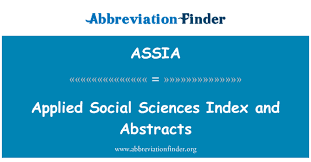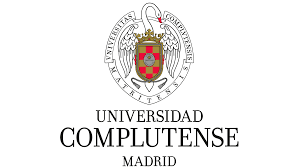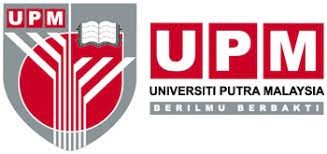Physiotherapeutic techniques for the treatment of pelvic organ prolapse
DOI:
https://doi.org/10.51736/sa.v7iEspecial%203.282Keywords:
physiotherapy, pelvic organ prolapse, quality of lifeAbstract
Pelvic organ prolapse (POP) is a significant clinical problem that affects many women at different stages of life. The objective of this study is to synthesize current evidence on physiotherapeutic techniques applied in the treatment of POP, providing a clear and well-founded perspective for health professionals. A systematic review of the literature was conducted between 2019 and 2024, using databases such as PubMed, Scopus, and COCHRANE, and keywords related to physiotherapy and pelvic prolapse. Eleven studies with a good methodological quality score were selected. The results showed that pelvic floor muscle training (PFMT) significantly improves pelvic, urinary, and intestinal symptoms, as well as pelvic floor function and quality of life. However, no significant improvements were observed in sexual function or changes in the stage of POP. The heterogeneity among the studies made interpretation of the results difficult. Additionally, when PFMT was used as an adjunct to surgery, no additional improvements were evidenced.
Downloads
References
Abreu, Y., Martínez, J., Rodríguez, E. M., Alerm, A., García, J. Á. (2021). Prolapso de órganos pélvicos en la mujer. Revisión bibliográfica. Rev Cuba Med Física y Rehabil, 8, 99–110. http://www.sld.cu/sitios/revrehabilitacion/
Duarte, T. B., Bø, K., Brito, L. G. O., Bueno, S. M., Barcelos, T. M., & Bonacin, M. A. (2020). Perioperative pelvic floor muscle training did not improve outcomes in women undergoing pelvic organ prolapse surgery: a randomised trial. J Physiother, 66(1):27–32. https://doi.org/10.1016/j.jphys.2019.11.013
Espiño, A., Castaño, C., Díaz, E., Ibáñez, A. J. (2022). Effects of Pelvic-Floor Muscle Training in Patients with Pelvic Organ Prolapse Approached with Surgery vs. Conservative Treatment: A Systematic Review. J Pers Med, 12(5).
Giagio, S., Innocenti, T., Salvioli, S., Lami, A., Meriggiola, M. C., & Pillastrini, P. (2021). Completeness of exercise reporting among randomized controlled trials on pelvic floor muscle training for women with pelvic organ prolapse: A systematic review. Neurourol Urodyn, 40(6), 1424–32.
Kedzia, W., (2022). The role of visceral therapy, Kegel’s muscle, core stability and diet in pelvic support disorders and urinary incontinence — including sexological aspects and the role of physiotherapy and osteopathy. Ginekol Pol., 93(12), 1018–27.
Liang, Y., Li, X., Wang, J., Liu, Y., Yang, Y., Dong, M. (2019). Effect of Pelvic Floor Muscle Training on Improving Prolapse-related Symptoms After Surgery. J Nurse Pract, 15(8), 600–5. https://doi.org/10.1016/j.nurpra.2019.06.002
Mancera, A., & Jiménez, J. (2022). Prolapso de órganos pélvicos. Iatreia, 80(4), 248–50.
Mathew, S., Nyhus, M. Ø., Salvesen, Ø., Salvesen, K. Å., Stafne, S. N., Volløyhaug, I. (2021). The effect of preoperative pelvic floor muscle training on urinary and colorectal-anal distress in women undergoing pelvic organ prolapse surgery—a randomized controlled trial. Int Urogynecol J, 32(10), 2787–94.
Mastwyk, S., McClelland, J., Rosamilia, A., Frawley, H. (2019). The impact of pelvic organ prolapse and/or continence surgery on pelvic floor muscle function in women: A systematic review. Neurourol Urodyn, 38(6), 1467–81. http://dx.doi.org/10.1002/nau.24025
Moser, H, Luginbuehl, H., Baeyens, J. P., (2019). Radlinger L. Reliability and validity of pelvic floor muscle displacement measurements during voluntary contractions. Int Urogynecol J., 30(12), 2093–100.
Nyhus, M., Mathew, S., Salvesen, L., Salvesen, K., Stafne, S., Volløyhaug, I. (2020). Effect of preoperative pelvic floor muscle training on pelvic floor muscle contraction and symptomatic and anatomical pelvic organ prolapse after surgery: randomized controlled trial. Ultrasound Obstet Gynecol, 56(1), 28–36.
Palma, P., Riccetto, C., Hernández, M., Olivares, J. (2023). Prolapsos urogenitales: Revisión de conceptos. Actas urológicas españolas, 32(6), 618–23. http://scielo.isciii.es/pdf/aue/v32n6/v32n6a07.pdf
Stopler, S. N. (2023). Efectividad de las técnicas de fisioterapia en la reducción de los síntomas vaginales (pesadez pélvica y abultamiento) en el caso de prolapsos de órganos pélvicos en estadios sintomáticos. Univ les Illes Balear http://dspace.uib.es/xmlui/handle/11201/147827
Tunn, R., Baessler, K., Knüpfer, S., Hampel, C. (2023). Urinary Incontinence and Pelvic Organ Prolapse in Women. Dtsch Arztebl Int., 120(5), 71–80.
Urrutia, G., & Bonfill, X. (2019). Declaración PRISMA: Una propuesta para mejorar la publicación de revisiones sistemáticas y metaanálisis. Medicina Clínica, 135, 507–11. http://es.cochrane.org/sites/es.cochrane.org/files/public/uploads/PRISMA_Spanish.pdf
Weintraub, A. Y., Glinter, H., Marcus-Braun, N. (2020). Narrative review of the epidemiology, diagnosis and pathophysiology of pelvic organ prolapse. Int Braz J Urol., 46(1), 5–14.
Published
How to Cite
Issue
Section
License
Copyright (c) 2024 Andrea Gabriela Ácaro Narváez, Paola Gabriela Ortiz Villalba

This work is licensed under a Creative Commons Attribution-NonCommercial-ShareAlike 3.0 Unported License.






















































